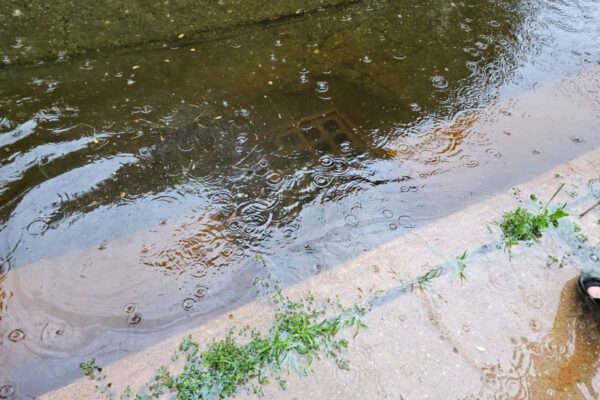Horton’s approach to safety and risk management focuses on developing and implementing industry leading practices. Clients who focus solely on compliance won’t enjoy the same level of success as those who focus on becoming an industry leader in any aspect of their business.
However, OSHA compliance is becoming a more significant element of risk and cannot be ignored. First, non-compliance is an uninsurable risk and the consequences extend far beyond the financial impact of penalties imposed. There is also potential for significant reputational damage resulting from significant OSHA inspections and citations.
OSHA Increase in Penalties (Fines):
On June 30th, OSHA announced an increase in penalties would be effective on August 1st. The increase in penalties we authorized by congress in a budget agreement and signed into law by the President. Unlike many other federal agencies, OSHA lacked the authority to increase its penalties to keep up with inflation and hadn’t increased the amount of penalties since 1990.
To “catch up”, congress authorized OSHA to apply a 78% increase to the current penalty structure and then require the agency to make adjustments to the penalties every year according to the Consumer Price Index. This will take the maximum penalty for serious or other than serious citations from $7,000 to $12,741 and willful or repeat violations from $70,000 to $124,709.
Employers who were inspected after February 1, 2016, but have not had their case closed or citations issued, will likely receive the increased penalty amounts. The agency made its intentions known in this link: https://www.osha.gov/penalties.html.
Inspection Activity:
Many in the regulated community believe the myth that OSHA is a “self-funded” federal agency. The penalties (or fines) collected by the agency are deposited directly into the US Treasury. Despite the fact the agency is not self-funded, they are subject to evaluation and political pressure to perform inspections and issue citations and penalties.
In my 37 years of professional safety practice, I have never seen the agency more active than it’s been in the last 6 or 7 years. I often refer to the agency “being on fire” because of the number of inspections occurring and the extent of citations and penalties issued.
Quotas:
You will NEVER find any reference to quotas on OSHA’s website, but the performance evaluation programs implemented essentially create a quota-like system. Each area office is required to track how many inspections are conducted. Prior to a memorandum issued by the Assistant Secretary of Labor and OSHA head David Michaels, area offices received one “credit” for each inspection conducted.
Assistant Secretary Michaels opines in his memorandum that some area offices were effectively penalized for conducting more complex inspections including process safety management, ergonomics, workplace violence, and larger cases where the amount of penalties imposed exceed $100,000. His memorandum, and resultant change in policy, provides greater “credit” to OSHA offices who conduct these more complex inspections. This is a link to this memorandum: https://www.osha.gov/dep/enforcement/ews_memo_09302015.html.
In my opinion, this is a thinly veiled attempt to incentivize OSHA area offices and compliance officers to pursue inspections in the categories detailed in Assistant Secretary Michaels’ memorandum. Even worse, OSHA hasn’t even developed specific standards for some of these “higher value” categories such as ergonomics, workplace violence, combustible dust, and other categories listed in the memo. In the absence of a specific standard, the agency will issue citations using the “general duty clause” from 5(a)(1) of the Occupational Safety and Health Act. This catch all type of citation exposes employers to citations for which no specific standard currently exists in a system that effectively makes the employer guilty unless they can prove their innocence.
Reaction:
Frustration is an expected and obvious reaction to increased penalties and inspections focusing on hazards for which the agency has yet to develop standards to address, but it doesn’t deal with the reality at hand.
Employers must avoid the approach, “it will never happen to me”. In my 37 years in safety I guarantee you things that can never happen, happen every day. The random nature of OSHA inspections can cause an employer to weaken their defenses by assuming, or hoping, an inspection is unlikely to occur.
There are several recommended and appropriate responses to the current regulatory climate. These include:
- Completing a comprehensive, mock OSHA audit including all programs, training records, logs, facilities, and operations
- Preparing for the inevitability of an OSHA inspection by developing, and practicing, a written protocol and training key employees
- Preparing all employees for the inevitability of an OSHA inspection by training them in how to respond when questioned by a compliance officer
- Evaluating and implementing leading edge safety and risk management programs which will earn good faith “credits” during an OSHA inspection
- Developing a relationship with a safety consulting firm and attorney who specializes in OSHA law to provide assistance when an inspection occurs
Your Horton safety consultant can guide you through this quagmire and assist in identifying and prioritizing your compliance, safety, and risk management needs. The government and its enforcement agencies are a force to be reckoned with, but the best approach is to be ahead of the curve before the inspection occurs and, based on our experience, an inspection is a likely event every employer should plan for.
Material posted on this website is for informational purposes only and does not constitute a legal opinion or medical advice. Contact your legal representative or medical professional for information specific to your legal or medical needs.



